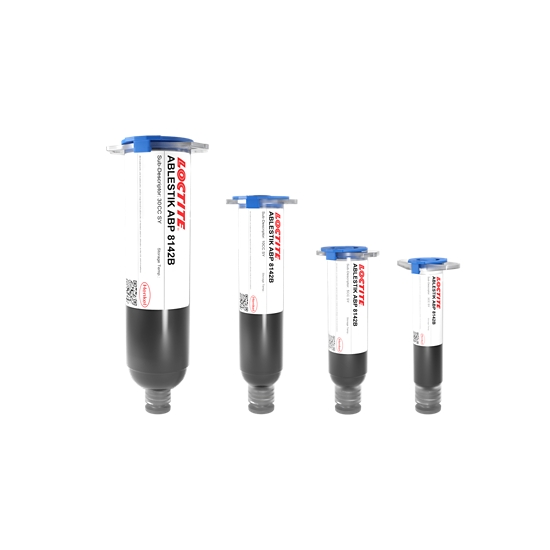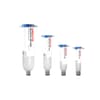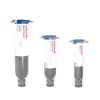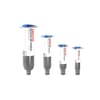LOCTITE ABLESTIK ABP 8142B
- Low and stable modulus
- Snap cure or oven cure
- MEMs package applications
Product Description
LOCTITE ABLESTIK ABP 8142B non-conductive die attach adhesive is designed for MEMs package applications. It has low bleed and a stable modulus in a range between -30 to 200 degrees celcius, resulting in stable stress, making it ideal for pressure sensor applications. Its silicone chemistry should be able to withstand >300°C for a short time if the application requires it.
LOCTITE ABLESTIK ABP 8142B is a flexible, non corrosive silicone based adhesive that is stable in high temperatures. It can potentially withstand reflow temperatures and follow thermal deformations but we advise the customers to test it for their application. It has a relatively low outgassing of 1.42% at 150°C for 60mins.
Please advise the Data package in the Documents section for extensive test results regarding work life, dispensing, bleeding, warpage, adhesion and other properties.
Cure Schedule
- 30 minutes @ 150ºC
Technical Specifications
| General Properties | |||||||||||
| Work life @25°C Work life @25°C Work life is the amount of time we have to work with a material until it is no longer able to be easily worked and applied on a substrate. It is based on the change in viscosity and it can rely on the application requirements. | 24 hours | ||||||||||
| |||||||||||
| Thermal Properties | |||||||||||
| Glass Transition Temperature (Tg) Glass Transition Temperature (Tg) The glass transition temperature for organic adhesives is a temperature region where the polymers change from glassy and brittle to soft and rubbery. Increasing the temperature further continues the softening process as the viscosity drops too. Temperatures between the glass transition temperature and below the decomposition point of the adhesive are the best region for bonding. The glass-transition temperature Tg of a material characterizes the range of temperatures over which this glass transition occurs. | -55.5 °C | ||||||||||
| Thermal Conductivity Thermal Conductivity Thermal conductivity describes the ability of a material to conduct heat. It is required by power packages in order to dissipate heat and maintain stable electrical performance. Thermal conductivity units are [W/(m K)] in the SI system and [Btu/(hr ft °F)] in the Imperial system. | 0.2 W/m.K | ||||||||||
| |||||||||||
| Mechanical Properties | |||||||||||
| |||||||||||
| |||||||||||
| Chemical Properties | |||||||||||
| Moisture absorption | 0.43 % | ||||||||||
| Physical Properties | |||||||||||
| Thixotropic index Thixotropic index Thixotropic Index is a ratio of a material s viscosity at two different speeds in Ambient temperature, generally different by a factor of ten. A thixotropic material s viscosity will decrease as agitation or pressure is increased. It indicates the capability of a material to hold its shape. Mayonnaise is a great example of this. It holds its shape very well, but when a shear stress is applied, the material easily spreads. It helps in choosing a material in accordance to the application, dispense method and viscosity of a material. | 3.3 | ||||||||||
| Viscosity Viscosity Viscosity is a measurement of a fluid’s resistance to flow. Viscosity is commonly measured in centiPoise (cP). One cP is defined as the viscosity of water and all other viscosities are derived from this base. MPa is another common unit with a 1:1 conversion to cP. A product like honey would have a much higher viscosity -around 10,000 cPs- compared to water. As a result, honey would flow much slower out of a tipped glass than water would. The viscosity of a material can be decreased with an increase in temperature in order to better suit an application | 12,254 mPa.s | ||||||||||






